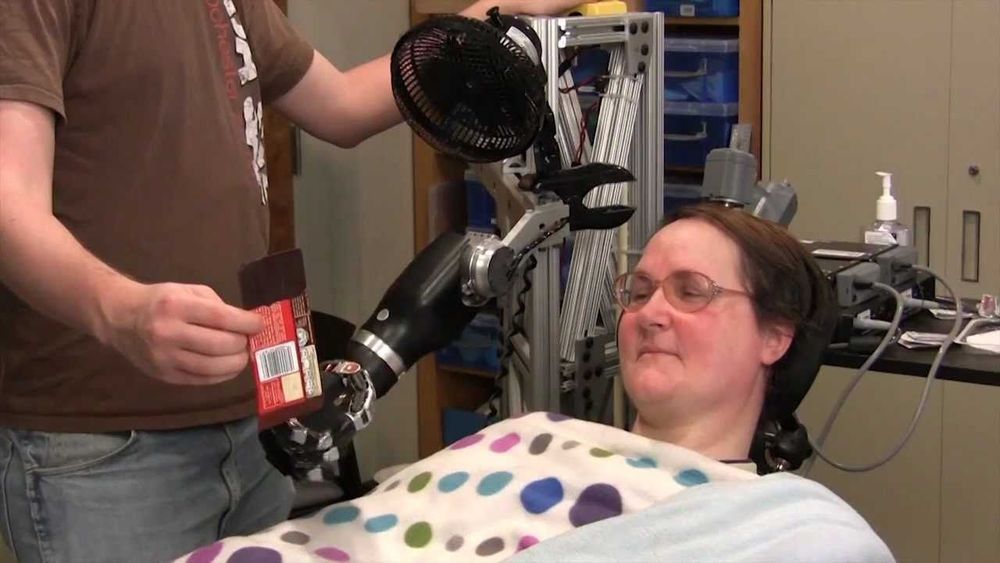Sep 23, 2020
Unlocking a 140-year-old secret mystery in physics
Posted by Quinn Sena in category: physics
Circa 2019
Unlocking the physical characteristics of semiconductors in much greater detail.
Circa 2019
Unlocking the physical characteristics of semiconductors in much greater detail.
Scientists have long theorised that there are other types of superconductor out there waiting to be discovered, and it turns out they were right: new research has identified a g-wave superconductor for the first time, a major development in this area of physics.
Superconductors are materials that offer no electrical resistance, so electricity can pass through them with close to 100 percent efficiency.
That sounds great when you think about the potential of super-efficient power grids that don’t lose energy to heat. But there’s a catch. Materials that are able to act in this way usually need to be cooled to ultra-low temperatures before the actual superconductivity starts happening.
Physicists from Lancaster University have established why objects moving through superfluid helium-3 lack a speed limit in a continuation of earlier Lancaster research.
Helium-3 is a rare isotope of helium, in which one neutron is missing. It becomes superfluid at extremely low temperatures, enabling unusual properties such as a lack of friction for moving objects.
It was thought that the speed of objects moving through superfluid helium-3 was fundamentally limited to the critical Landau velocity, and that exceeding this speed limit would destroy the superfluid. Prior experiments in Lancaster have found that it is not a strict rule and objects can move at much greater speeds without destroying the fragile superfluid state.

Making hydrogen a metal takes lot of pressure. But after a group of scientist’s lost the world’s first sample, the pressure is really on.
Is Jupiter the Reason for Life on Earth? — https://youtu.be/nsGRvnPL95I
Continue reading “Why Metallic Hydrogen Is the Holy Grail of High Pressure Physics” »
Eindhoven University of Technology researchers found five different phases in mixtures of two substances.
Frozen water can take on up to three forms at the same time when it melts: liquid, ice, and gas. This principle, which states that many substances can occur in up to three phases simultaneously, was explained 150 years ago by the Gibbs phase rule. Today, researchers from Eindhoven University of Technology and University Paris-Saclay are defying this classical theory, with proof of a five-phase equilibrium, something that many scholars considered impossible. This new knowledge yields useful insights for industries that work with complex mixtures, such as in the production of mayonnaise, paint, or LCD’s. The researchers have published their results in the journal Physical Review Letters.
The founder of contemporary thermodynamics and physical chemistry is the American physicist Josiah Willard Gibbs. In the 1870s he derived the phase rule, which describes the maximum number of different phases a substance or mixture of substances can assume simultaneously. For pure substances, the Gibbs Phase Rule predicts a maximum of 3 phases.
Circa 2017
One of the more curious challenges in physics is to understand the nature of time. At the microscopic level, the laws of physics are symmetric with respect to time—they work just as well whether time runs forwards or backwards. But at the macroscopic level, processes all have a preferred direction. The great physicist Arthur Eddington called this the “arrow of time.”
Just why this arrow points in one direction but not the other is one of the great scientific puzzles. The standard answer is that the arrow of time follows from the Second Law of Thermodynamics—that disorder, or entropy, always increases in a closed system.
Continue reading “Physicists Demonstrate How to Reverse of the Arrow of Time” »
Researchers from the Moscow Institute of Physics and Technology and King’s College London cleared the obstacle that had prevented the creation of electrically driven nanolasers for integrated circuits. The approach, reported in a recent paper in Nanophotonics, enables coherent light source design on the scale not only hundreds of times smaller than the thickness of a human hair but even smaller than the wavelength of light emitted by the laser. This lays the foundation for ultrafast optical data transfer in the manycore microprocessors expected to emerge in the near future.
Light signals revolutionized information technologies in the 1980s, when optical fibers started to replace copper wires, making data transmission orders of magnitude faster. Since optical communication relies on light—electromagnetic waves with a frequency of several hundred terahertz—it allows transferring terabytes of data every second through a single fiber, vastly outperforming electrical interconnects.
Fiber optics underlies the modern internet, but light could do much more for us. It could be put into action even inside the microprocessors of supercomputers, workstations, smartphones, and other devices. This requires using optical communication lines to interconnect the purely electronic components, such as processor cores. As a result, vast amounts of information could be transferred across the chip nearly instantaneously.

Are you ready?
“if you were the type of geek, growing up, who enjoyed taking apart mechanical things and putting them back together again, who had your own corner of the garage or the basement filled with electronics and parts of electronics that you endlessly reconfigured, who learned to solder before you could ride a bike, your dream job would be at the Intelligent Systems Center of the Applied Physics Laboratory at Johns Hopkins University. Housed in an indistinct, cream-colored building in a part of Maryland where you can still keep a horse in your back yard, the ISC so elevates geekdom that the first thing you see past the receptionist’s desk is a paradise for the kind of person who isn’t just thrilled by gadgets, but who is compelled to understand how they work.”
Continue reading “The brain-computer interface is coming, and we are so not ready for it” »
Long-distance cargo ships lose a significant amount of energy due to fluid friction. Looking to the drag reduction mechanisms employed by aquatic life can provide inspiration on how to improve efficiency.
Fish and seaweed secrete a layer of mucus to create a slippery surface, reducing their friction as they travel through water. A potential way to mimic this is by creating lubricant-infused surfaces covered with cavities. As the cavities are continuously filled with the lubricant, a layer is formed over the surface.
Though this method has previously been shown to work, reducing drag by up to 18%, the underlying physics is not fully understood. In the journal Physics of Fluids, researchers from the Korea Advanced Institute of Science and Technology and Pohang University of Science and Technology conducted simulations of this process to help explain the effects.